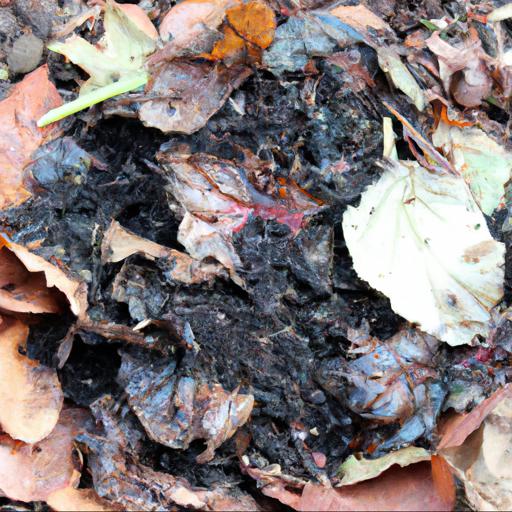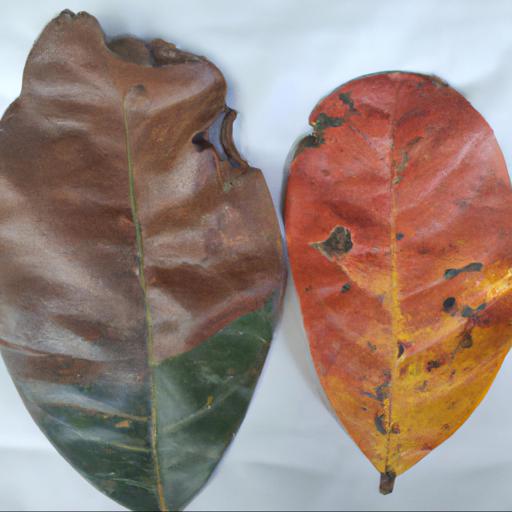Leaf mould is an incredibly useful and versatile material that can be used to improve soil structure, add nutrients, and even provide a habitat for beneficial insects. But not all leaves are created equal when it comes to making leaf mould. So, what are the best leaves for leaf mould?
In this blog, we’ll explore the different types of leaves that make the best leaf mould and how to use them to improve your garden. We’ll also look at the benefits of leaf mould and how to make it at home.
So read on to learn more about the best leaves for leaf mould and how to make it!
Benefits of leaf mould

. The best leaves for leaf mould are an essential part of successfully creating and using leaf mould in your UK garden. Leaf mould is an incredible free resource for the garden, providing an organic mulch that protects soil, provides nutrients and can be used for a variety of beneficial purposes.
Knowing which leaves make the best leaf mould is key to creating successful and healthy garden projects. Older and softer leaves are generally ideal for leaf mould, which means some of the best leaves to use are deciduous trees such as oak, beech and sycamore.
They decompose quickly and easily without leaving a lot of woody residue. Each leaf has its own unique texture, giving it unique properties when used in leaf mould. Younger, softer leaves will break down faster, while larger and tougher leaves will give your leaf mould a stronger structure.
Beech leaves are also good for leaf mould, although they take longer to break down as they contain tannins which act as a fungi repellent. As well as deciduous trees, annual weeds like docks and nettles are another good source of leaf mould.
Anything that grows quickly will generally produce a high quantity of leaves, quickly and easily breaking down into leaf mould that you can use enriched your soil. While the leaves of these weeds and trees may seem too tough to use initially, they will break down with time or when mixed with other leaves that are softer and easier to rot down. Not all leaves can be used for leaf mould, so make sure you’re using the right type when creating your own – it makes a huge difference to the success of the project.
The best leaves for leaf mould will provide high levels of organic matter that can improve the condition of your soil, protect plants from frost, retain moisture and attract beneficial insects and microorganisms. With the right leaves, you’ll soon have your garden thriving with the wonderful, free resource of leaf mould.
Types of leaves suitable for leaf mould

As a UK garden expert, I understand that a well-made leaf mould is a great addition to any garden. Leaf mould is an ideal soil conditioner for plants and can help to retain moisture throughout the growing season. The best leaves for making leaf mould are those that break down easily and will contribute the most nutrients to the soil.
The leaves of deciduous trees such as oak, beech, ash, sycamore, and hornbeam along with those of evergreen trees such as laurel, holly, and eucalyptus are ideal leaves for leaf mould. These leaves are high in nutrients, break down easily, and create an ideal environment for beneficial insects and worms.
When these types of leaves decompose they release essential nutrients that stimulate growth in other nearby plants. Certain types of leaves are not suitable for making leaf mould due to their slow decomposition rate. Conifer leaves, such as cedar, pine and spruce, are often thick and leathery and can take a much longer time to break down.
Leaves that are low in nutrients, such as those of the silver birch, will also take a longer time to decompose and would be best suited for removing from the garden and disposing of elsewhere. In conclusion, the best leaves for making leaf mould are those that are high in nutrients and break down easily.
These include leaves from deciduous and evergreen trees such as oak, beech, laurel, and eucalyptus. Leaves from coniferous and birch trees are not suitable for making leaf mould due to their slow decomposition rate.
With a selection of the right leaves, you will be able to make a healthy and nutritious leaf mould for your garden.
How to make leaf mould

For gardeners who are looking to create leaf mould, selecting the right type of leaves is absolutely essential. Leaf mould not only provides an organic matter, it also helps to improve the soil structure and provides a natural form of low cost compost.
But, before you get started on your leaf mould experiments, it is important to know which leaves are best suited to making leaf mould. When it comes to leaf selection, deciduous trees are the best choice. Deciduous species, such as oaks, beech and sycamore, have the highest proportion of organic matter for the best leaf mould.
Their leaves tend to stay dry on the surface but retain moisture in the centre, meaning that they can break down faster in the compost environment, creating leaf mould more quickly. Fallen leaves should be gathered as soon as possible once they have fallen to avoid composting with other materials. Oak, beech and sycamore leaves should be shredded by either a leaf shredder or by hand, and then added to the compost bin.
The shredded leaves should be mixed well with other organic matter, such as garden waste and green waste. The mixture should remain moist and be turned over every few weeks.
It should start to breakdown after a few months and create the dark, crumbly leaf mould that gardeners love.
Tips for making the best leaf mould
Making leaf mould is a great way to recycle leaves and create a valuable and natural soil conditioner. So, if you’re looking to make the best leaf mould, there are some tips you need to follow.
First and foremost, you’ll need the right type of leaves. Not all leaves are suitable for making leaf mould, as some contain too much water or have a tendency to decompose quickly. Hardwood leaves such as those from oak, beech, hornbeam, and sweet chestnut trees are often the best for making leaf mould.
This is because, in contrast to softwood leaves, they are more durable and will therefore break down gradually. The smaller the leaf, the faster the breakdown process will be, so it’s important to choose leaves that are small and shredded to help speed up the process. You’ll also need to ensure optimal conditions in order to ensure the process of making leaf mould runs as smoothly as possible.
To this end, it’s important to keep your leaf mould bin away from the sun and remove any wet or soggy leaves as they are likely to decompose quickly and cause the rest of the leaves to become slimy and cloying. To really speed up the process, add a little water to the bin and this will help set the leaves in motion.
Finally, ensure that you turn the leaves once a month and this will help the leaf mould to decompose quicker. Also, to prevent any unwelcome pests from taking up residence, such as slugs and snails, make sure you keep the leaf mould lid on at all times. Following the above steps will guarantee the best leaf mould for use in your garden.
Our video recommendation
Bottom Line
Leaf mould is a natural form of compost that is created by the decomposition of leaves. It is an excellent soil amendment that can help improve soil structure, provide nutrients, and increase water retention. The best leaves for making leaf mould are deciduous leaves, such as oak, maple, and beech, as they are high in carbon and break down easily.
To create leaf mould, simply collect the leaves, place them in a pile, and wait for them to decompose. With a bit of patience, you can create a nutrient-rich soil amendment that will help your garden thrive.
FAQ
What is the best type of leaves to use for leaf mould?
The best type of leaves to use for leaf mould are hardwood leaves, such as oak, beech, and maple. These leaves are slow to decompose, which helps create a rich, dark leaf mould.
How long does it take for leaves to decompose into leaf mould?
It typically takes between 1-2 years for leaves to decompose into leaf mould.
What are the benefits of using leaf mould in the garden?
The benefits of using leaf mould in the garden include improved soil structure, increased water retention, improved fertility, and increased microbial activity. Leaf mould also helps to suppress weeds and provides a natural source of nutrients for plants.
How can leaf mould be used in the garden?
Leaf mould can be used in the garden as a soil conditioner and mulch. It helps to improve soil structure, increase water retention, and provide nutrients to plants. It can also be used to make compost, which can be used to fertilize plants.
What is the best way to store leaf mould?
The best way to store leaf mould is in a dry, well-ventilated area, such as a shed or garage. It should be kept in a container with a lid to prevent moisture from getting in and to keep out pests.
How can leaf mould be used to improve soil quality?
Leaf mould can be used to improve soil quality by adding organic matter, increasing water retention, and providing nutrients to the soil. It can also help to improve soil structure, promote soil aeration, and reduce soil compaction.

